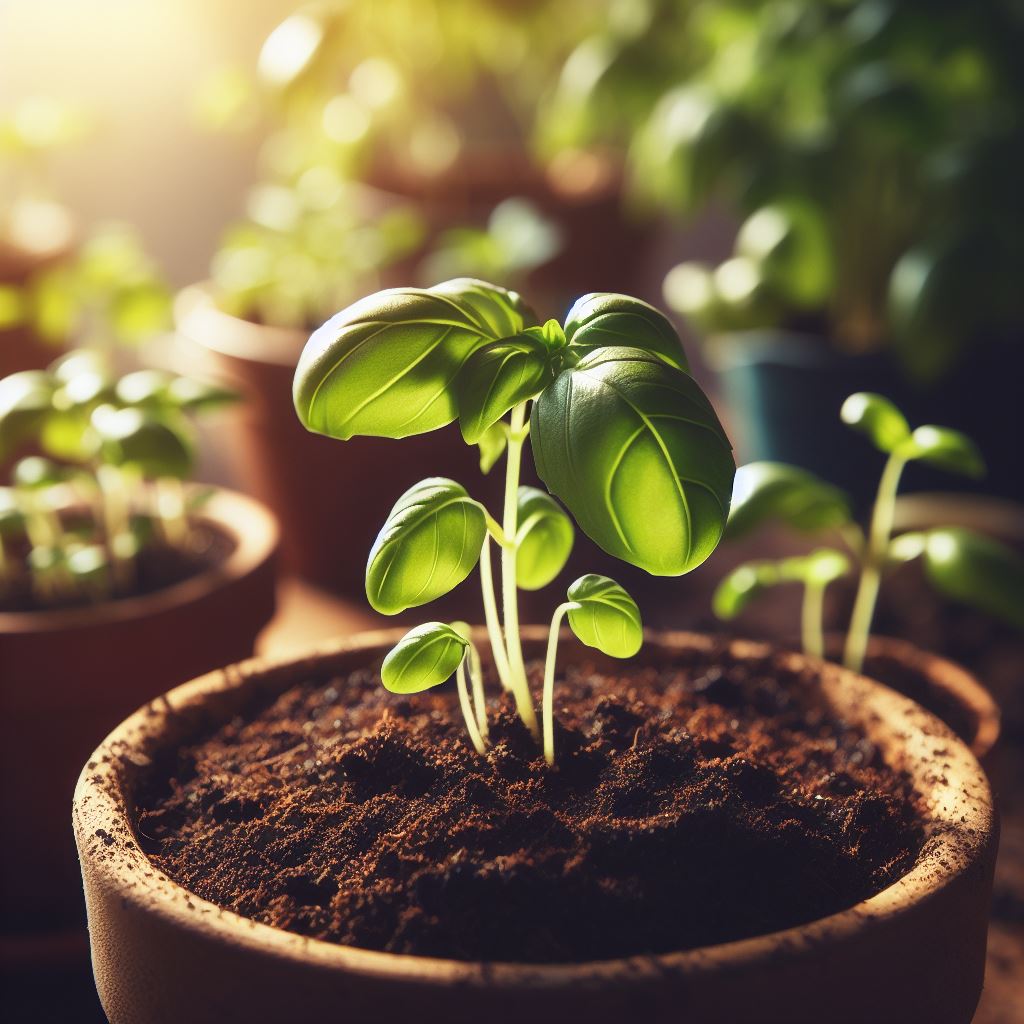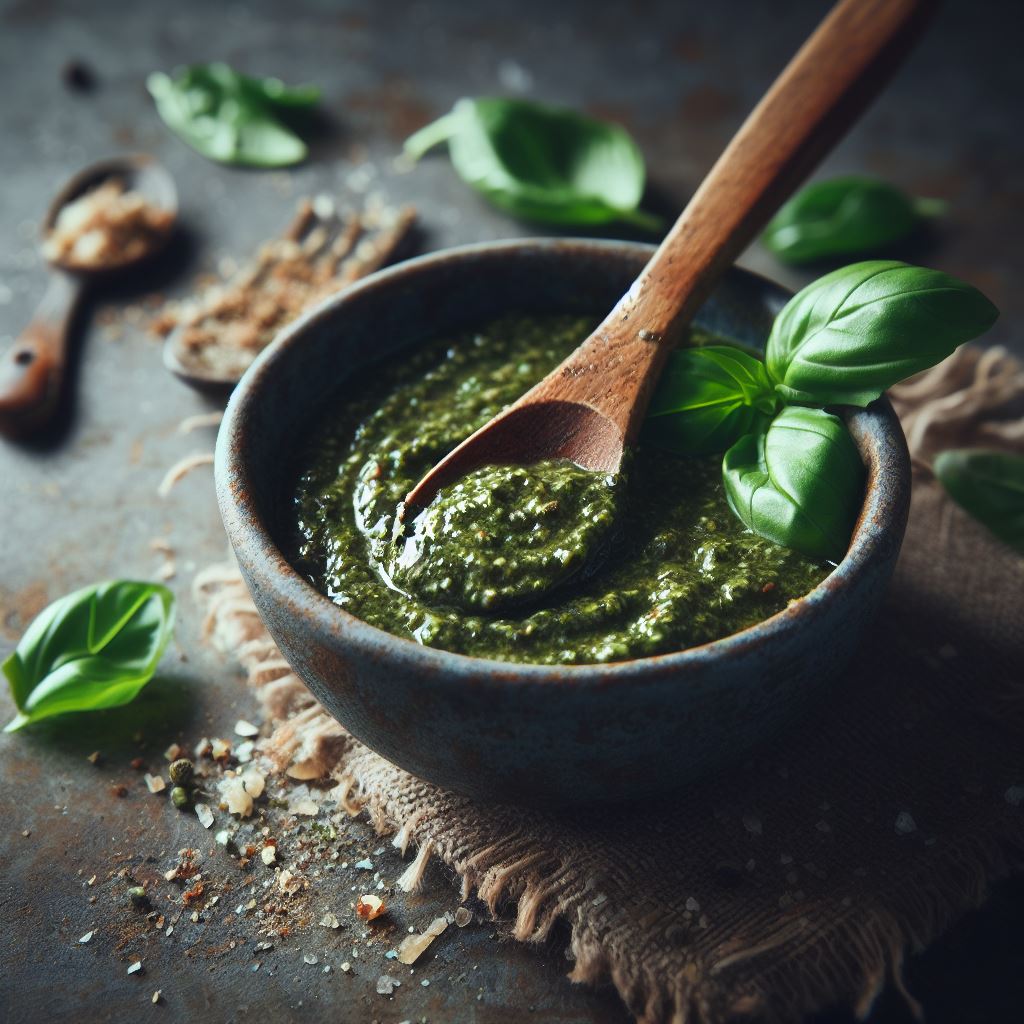
Growing basil indoors from cuttings is a cost-effective and convenient way to ensure a year-round supply of this flavorful herb. In this article, we will provide you with a step-by-step guide on how to grow basil from cuttings, along with essential care tips, harvesting and usage advice, and common troubleshooting techniques.
In this article
What You Need to Grow Basil Indoors from Cuttings
To grow basil indoors from cuttings, you will need the following items:
- A healthy basil plant: You can use a basil plant that you already have in your garden, or buy one from a nursery or a grocery store. Make sure the plant is free of pests and diseases, and has plenty of healthy leaves.
- A sharp knife or scissors: You will use this to cut the stems from the basil plant.
- A glass jar or a small vase: You will use this to hold the cuttings in water until they root.
- Water: You will use this to fill the jar or vase and keep the cuttings hydrated.
- A sunny windowsill: You will place the jar or vase on a windowsill that gets at least six hours of direct sunlight per day. Basil loves warm and bright conditions, so avoid placing it near drafts or cold spots.
- A pot with drainage holes: You will use this to transplant the rooted cuttings into soil. The pot should be large enough to accommodate the roots and leave some room for growth.
- Potting mix: You will use this to fill the pot and provide nutrients for the basil plant. Choose a high-quality potting mix that is well-draining and rich in organic matter.
- Fertilizer: You will use this to feed your basil plant once a month during the growing season. Choose an organic fertilizer that is suitable for herbs, such as fish emulsion or compost tea.
How to Grow Basil Indoors from Cuttings: Step by Step

Follow these steps to grow basil indoors from cuttings:
- Cut the stems from the basil plant: Choose healthy stems that are about 4 inches long and have at least four sets of leaves. Cut them just below a leaf node (where a leaf joins the stem) using a sharp knife or scissors. Remove the lower leaves from each stem, leaving only two sets of leaves at the top. This will encourage rooting and prevent rotting.
- Place the cuttings in water: Fill a glass jar or a small vase with water and insert the cuttings into it. Make sure the leaf nodes are submerged in water, but the leaves are not touching the water. Change the water every few days to keep it fresh and prevent algae growth.
- Place the jar or vase on a sunny windowsill: Put the jar or vase on a windowsill that gets at least six hours of direct sunlight per day. Rotate the jar or vase occasionally to ensure even exposure to light. Avoid exposing the cuttings to extreme temperatures or drafts.
- Wait for roots to form: In about two to four weeks, you should see roots emerging from the leaf nodes. The roots should be at least an inch long before you transplant them into soil.
- Transplant the rooted cuttings into soil: Prepare a pot with drainage holes and fill it with potting mix. Make a hole in the center of the pot and gently insert a rooted cutting into it. Firm the soil around the stem and water it well. Repeat with the rest of the cuttings, spacing them about 4 inches apart.
- Place the pot on a sunny windowsill: Put the pot on a windowsill that gets at least six hours of direct sunlight per day. Rotate the pot occasionally to ensure even exposure to light. Avoid exposing the plant to extreme temperatures or drafts.
How to Care for Your Basil Plant
Once you have transplanted your basil cuttings into soil, you need to take good care of them to ensure healthy growth and abundant harvests. Here are some tips on how to care for your basil plant:
- Water regularly: Keep the soil moist but not soggy. Water when the top inch of soil feels dry to the touch. Avoid overwatering or underwatering, as both can cause problems for your basil plant.
- Fertilize monthly: Feed your basil plant once a month during the growing season with an organic fertilizer that is suitable for herbs, such as fish emulsion or compost tea. Follow the instructions on the label and dilute the fertilizer according to the recommended rate. Apply the fertilizer to the soil around the base of the plant, avoiding the leaves.
- Prune regularly: Prune your basil plant regularly to encourage bushy growth and prevent flowering. Pinch off the tips of the stems just above a pair of leaves. This will stimulate new branches and leaves to grow. Remove any flowers or buds that appear, as they will reduce the flavor and quality of your basil leaves.
- Harvest frequently: Harvest your basil leaves frequently to enjoy their fresh flavor and aroma. You can harvest individual leaves or whole stems as needed. Cut or pinch off the leaves or stems just above a pair of leaves. Use them fresh or store them in the refrigerator for up to a week, wrapped in a damp paper towel and placed in a plastic bag. You can also freeze or dry your basil leaves for longer storage.
How to Use Your Basil
Basil is a versatile herb that can be used in a variety of dishes, from pasta to salads. Here are some ideas on how to use your basil:

- Make pesto: Pesto is a classic Italian sauce made with basil, garlic, pine nuts, Parmesan cheese, and olive oil.
- Make caprese salad: Caprese salad is a simple and delicious salad made with fresh mozzarella cheese, tomatoes, basil, and olive oil.
- Make lemon-basil chicken: Lemon-basil chicken is a quick and easy dish that pairs well with rice or pasta.
Growing basil indoors from cuttings is a fun and easy way to have fresh herbs at your fingertips. All you need is a healthy basil plant, a glass jar or vase, water, a sunny windowsill, a pot with drainage holes, potting mix, fertilizer, and some basic care tips. You can enjoy your basil in many dishes, from pesto to caprese salad to lemon-basil chicken.
Frequently Asked Questions
How long does it take for basil cuttings to root?
It usually takes about two to four weeks for basil cuttings to root in water. However, this may vary depending on the temperature, light, and water conditions.
How do I know when to transplant my basil cuttings into soil?
You should transplant your basil cuttings into soil when they have roots that are at least an inch long. This will ensure that they have enough root system to support their growth in soil.
How do I prevent my basil plant from flowering?
You can prevent your basil plant from flowering by pruning it regularly and removing any flowers or buds that appear. Flowering reduces the flavor and quality of your basil leaves.
How do I propagate my basil plant?
You can propagate your basil plant by taking more cuttings from it and repeating the same process as before. This way, you can multiply your basil plants and share them with your friends or family
Happy gardening!







